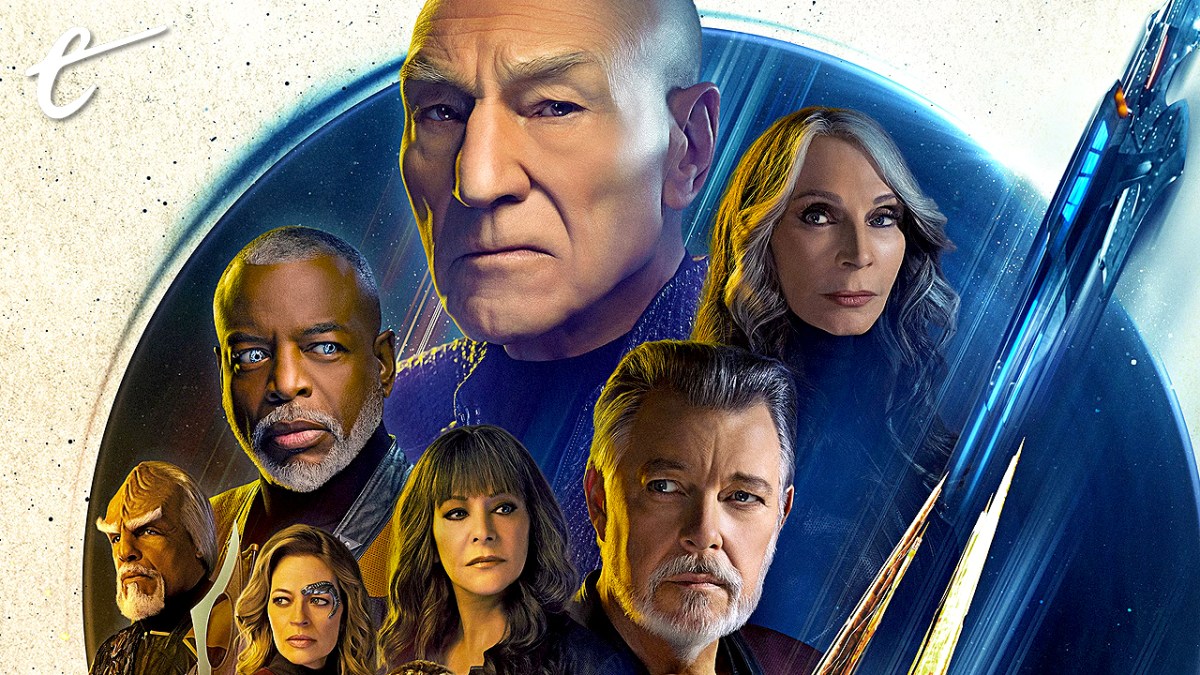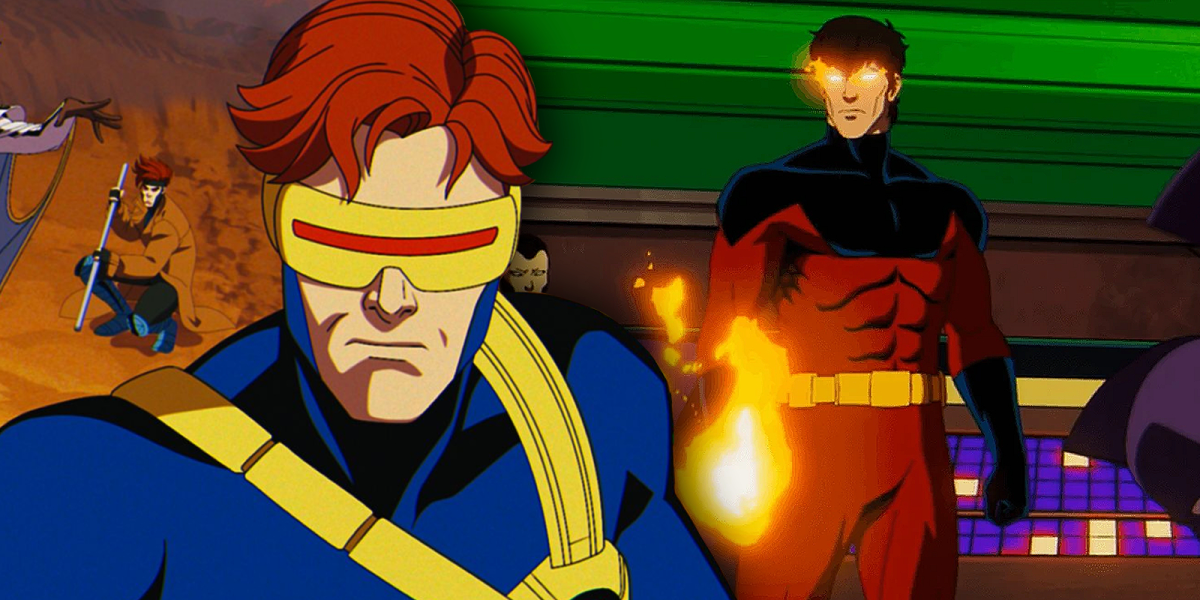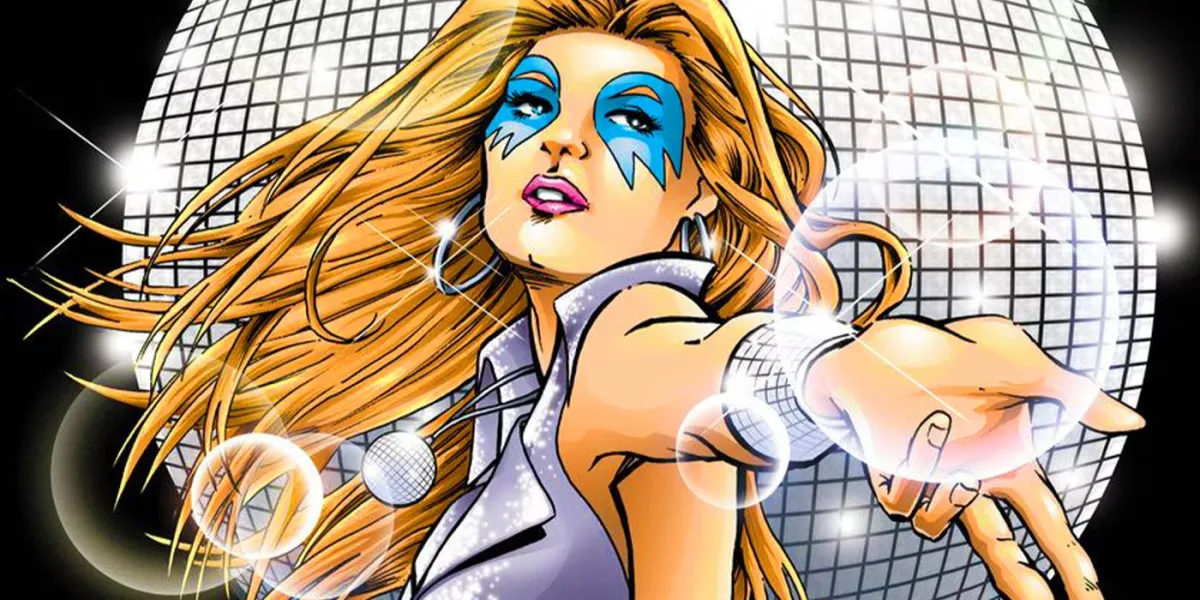This discussion and review contains very light spoilers for Star Trek: Picard season 3, streaming on Paramount+.
It’s rare that a piece of media starts by firmly telling the audience how low to set their expectations, but the third season of Star Trek: Picard is at least honest in this regard.
The teaser of the season premiere opens with a loving pan over a collection of props clearly intended to stir the audience’s nostalgia for Star Trek: The Next Generation. A desktop monitor plays back Captain Jean-Luc Picard’s (Patrick Stewart) log entry from “The Best of Both Worlds,” conjuring memories of the franchise’s peak in the popular consciousness. The camera lingers on objects long enough to stimulate the fandom’s endorphins.
However, this sort of pandering fan service is par for the course with most modern franchise revivals. There’s nothing especially novel about a season of Picard opening with a heavy dose of, “Hey, you remember this!” in an attempt to get the target audience on its side. The most telling part of this otherwise fairly standard sequence is the choice of musical accompaniment. Over these loving and drifting camera shots, Picard plays “I Don’t Want to Set the World on Fire” by the Ink Spots.
Ostensibly, this sets up a recurring motif where characters talk about apocalyptic events using fire imagery. In the fourth episode, “No Win Scenario,” Captain Liam Shaw (Todd Stashwick) recalls the events of “The Best of Both Worlds,” how it felt “like space itself was burning” and how Picard was “on that Borg Cube, setting the world on fire.” Later in the season, the villainous Vadic (Amanda Plummer) talks about wanting to burn the Federation.
However, as that opening scene plays, the sound mix drifts in and out on particular lyrics, as if underlining them for the audience. “I don’t want to set the world on fire,” croon the Ink Spots. “I just want to start a flame in your heart.” A few moments later, the soundtrack hones in on another lyric from the band, “I’ve lost all ambition for worldly acclaim. I just want to be the one you love.” It feels very much like a statement of purpose for Star Trek: Picard season 3.
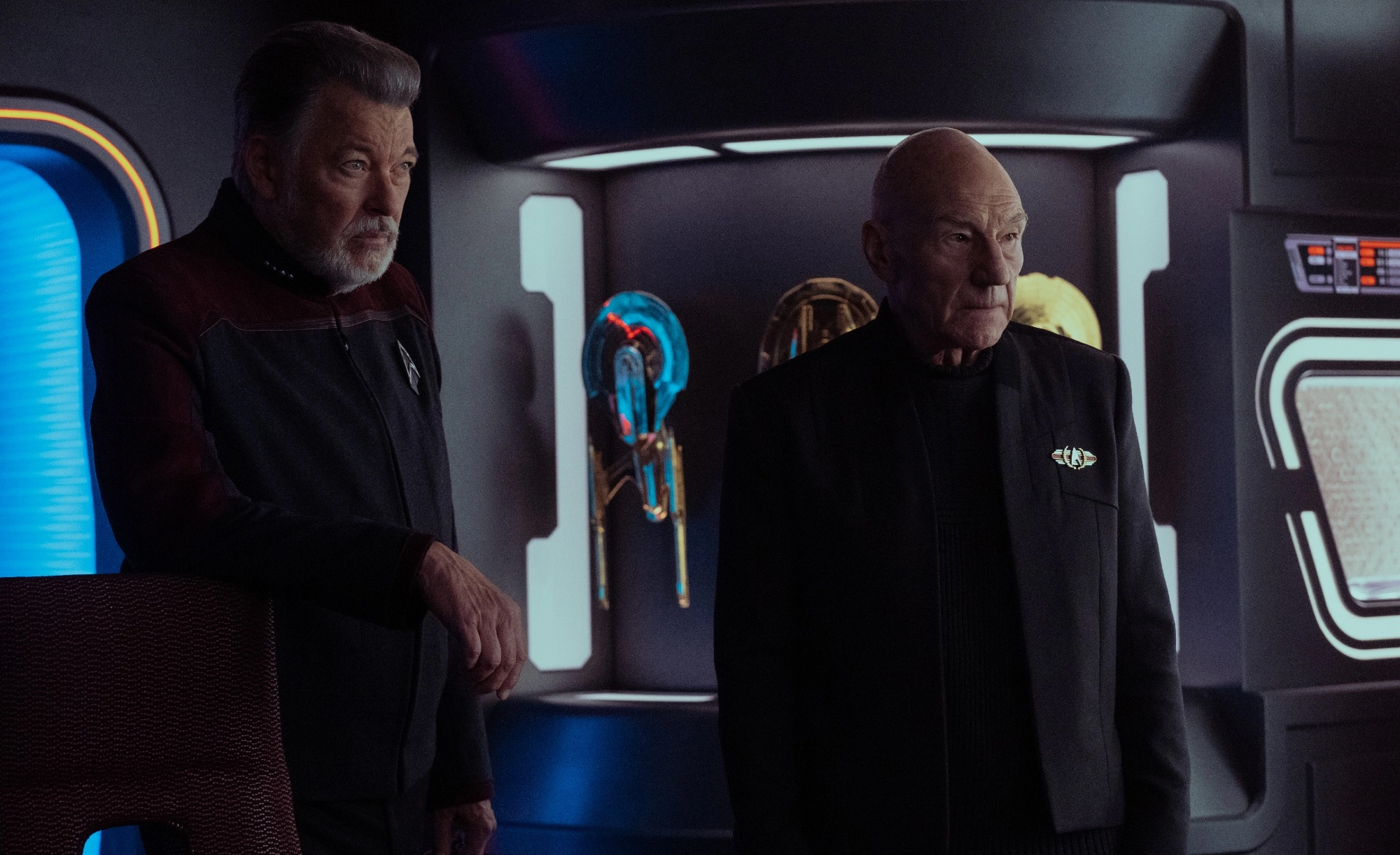
As with so much modern franchise media, there is no real ambition here. The third season of Picard isn’t longing to light the world on fire. It doesn’t really have anything profound or insightful to say about the world in which it was produced and released. It doesn’t have a strong authorial viewpoint. It doesn’t even have a real sense of purpose. It just wants to be liked by the presumed target audience of hardcore fans desperately yearning to be reminded of The Next Generation.
As with a lot of modern franchise streaming shows, Picard is extremely plot-driven. The series is designed on the assumption that the audience wants twists, references, and factoids and that everything else is secondary. As such, it’s hard to really talk about the season’s plot without wading into potential spoilers. Still, that opening scene leads to a distress call from Doctor Beverly Crusher (Gates McFadden), which serves as a call to action for her old friend and commanding officer.
Despite the difficulty of discussing the ins and outs of the third season of Picard without spoiling anything, there’s nothing new here. Much as the second season of Picard felt like a riff on the time-travel-and-old-enemy plot of First Contact, the third season is a collection of familiar Star Trek plot elements. It’s possible to rhyme off influences and allusions, to spot entire character arcs or set pieces lifted from earlier adventures like “Bloodlines” or “Conspiracy.”
It is perhaps easier to discuss the form and the function of the six episodes that were screened for critics. Towards the middle of the season, the characters find themselves trapped in a “gravity well” at the center of a nebula. It feels as appropriate a metaphor as any for the forces that seem to be acting on Star Trek: Picard season 3. The show is so trapped by its influences that it never manages to forge its own identity.
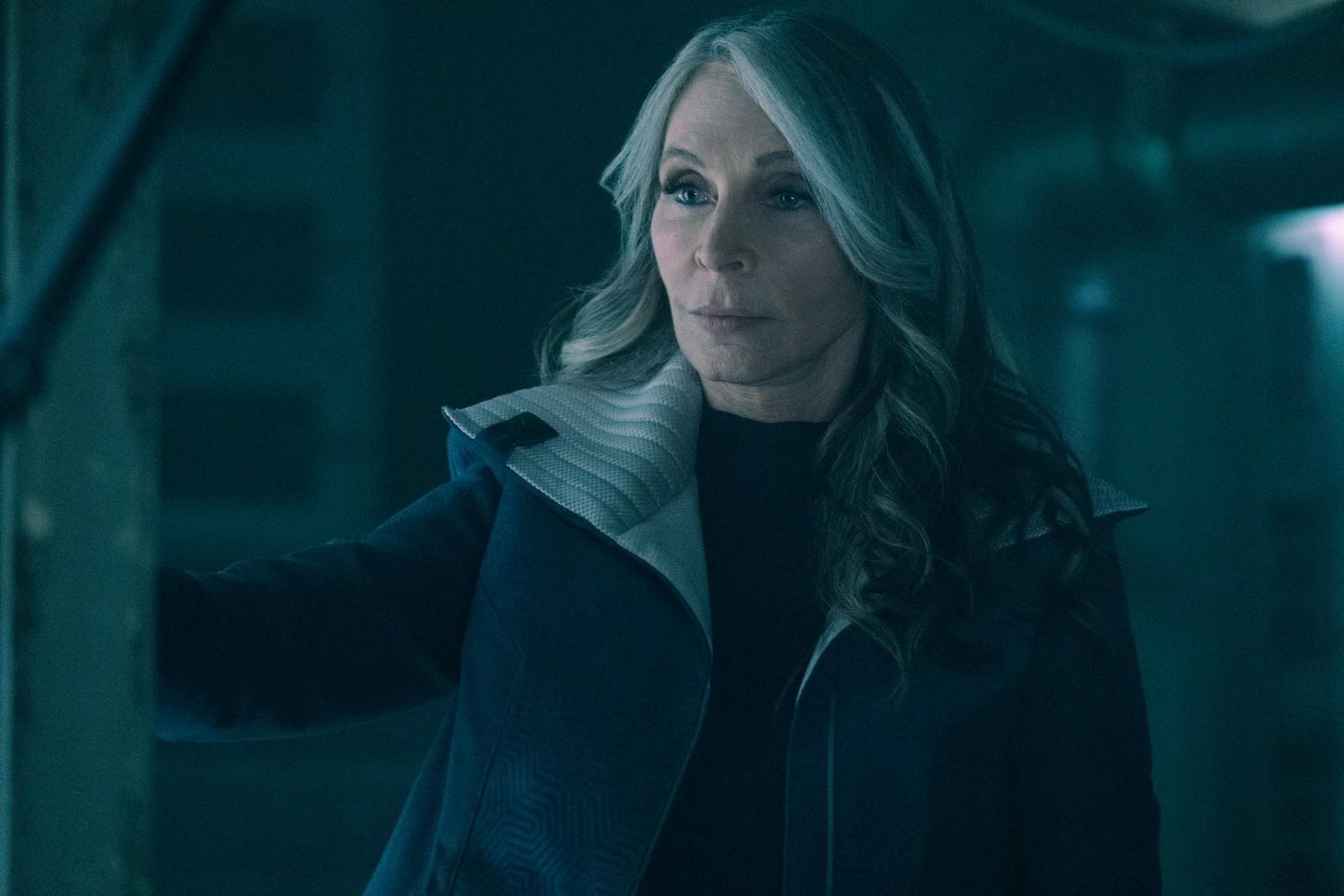
Notably, the third season of Picard eschews the opening credits sequences of the first two seasons of the show, opting for a much quicker title card in keeping with conventions of modern franchise streaming shows like The Mandalorian, The Book of Boba Fett, and Andor. Even the text formatting from the first two seasons is gone, replaced with the familiar Letraset Crillee font from The Next Generation. This is a show drawing a clear line between itself and its previous two seasons.
The first two seasons of Picard were not great television, but it is sad to see how enthusiastically the third season rushes to distance itself from what came before in the pursuit of something much more generic and even more nostalgic. The closing credits are now set over loving montages of production design, recalling how Marvel Studios closes its films and streaming shows. The show discards composer Jeff Russo’s score in favor of Jerry Goldsmith’s closing credits theme from First Contact.
Everything in the third season of Picard is geared towards nostalgia, down to the editing. Older Star Trek shows were populated with Easter eggs, the backgrounds of sets decorated with props from earlier adventures for eagle-eyed viewers. These objects were part of the universe’s texture, but not the focus. A casual viewer might miss them. In contrast, Picard frequently cuts into scenes with a close-up on an object of nostalgia — a copy of Picard’s famous painting of the Enterprise or Seven of Nine’s (Jeri Ryan) model of Voyager — as if worried the audience might somehow miss it.
A disheartening amount of the third season of Picard is given over to reassuring its characters and its audience that this sort of nostalgic pandering is fine — or even good. In the season premiere, Laris (Orla Brady) tells Picard, “Jean-Luc, you don’t need to prove to me how ready you are for this. How in the present you are. The past matters, and that’s okay.” She presses the point, “A point comes in a man’s life when he looks to the past to define himself. Not just his future.”
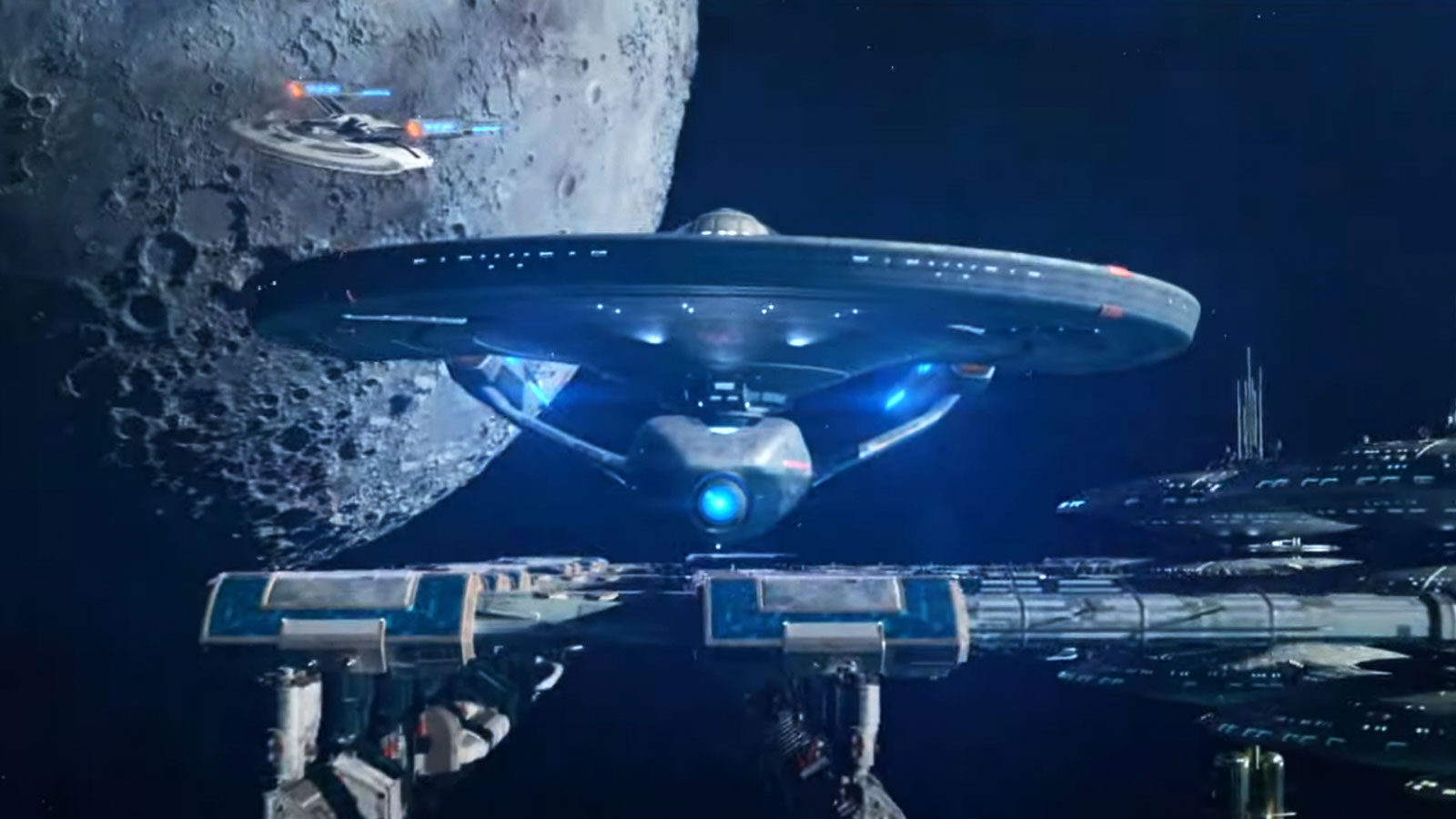
There’s something profoundly depressing in this, not least because this scene marks Laris’ only appearance in the season, another example of Star Trek: Picard season 3 making room for nostalgia by jettisoning any of its own identity and characters. Patrick Stewart is a great actor, one of the greatest performers the Star Trek franchise ever had. Jean-Luc Picard is a great character, arguably one of the most compelling creations in the entire mythology.
The third season of Picard assures us his greatest adventures lie behind him and that there’s nothing undignified in chasing the ghost of a memory. By the show’s logic, it’s a better choice than trying to boldly go into the future. Much of the publicity around the third season has focused on the nostalgic reunion of most of the primary cast of The Next Generation — the return of Stewart’s old colleagues like Jonathan Frakes, Marina Sirtis, LeVar Burton, Brent Spiner, Michael Dorn, and Gates McFadden.
Again, it’s best not to get into plot details for fear of spoilers, but there is something curious in how the third season of Picard doles out its continuity cameos. It structures their delivery across the six episodes screened for press. Some characters appear early, some later. Some are teased and then show up. Some are treated as big reveals, the solutions to mystery boxes in earlier episodes. It isn’t until the end of the sixth episode that it feels like the entire ensemble is truly in play.
There are a number of reasons why Picard might have adopted that approach. It might have been based on the schedules of certain performers dictating the amount of time and window of availability to shoot. It may have been a budgetary concern, with the production team trying to allocate their resources effectively. However, watching the season, the motivations feel frustratingly and predictably cynical. These cameos are just fan service methadone.
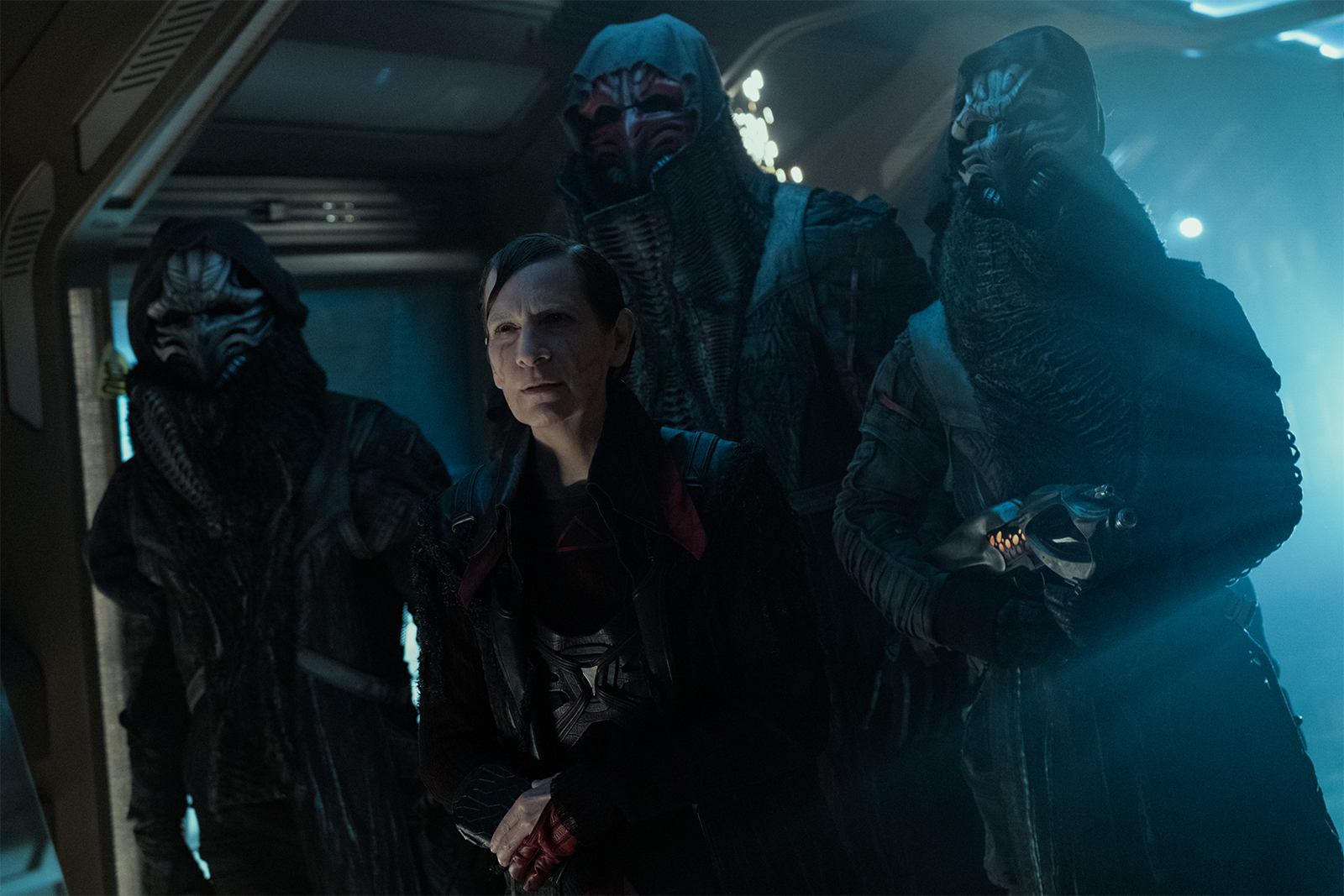
The third season strings out its cast reunion because it needs to keep the audience hooked and coming back. It can’t give away too much too early, because then there would be no thrill of anticipation and no lingering suspense. This nostalgia has to be rationed, drip-fed across a full season of television as a way of ensuring that the fans will keep coming back. Maybe the next episode will be the one with that particular thing that viewers want to be reminded of.
It’s a very depressing mode of storytelling, a streaming-service-streamlined version of the narrative engine employed by movies like Star Wars: The Rise of Skywalker and Ghostbusters: Afterlife. It’s a mode that has given up any hope of making anything that might be interesting in its own right and instead settled for serving reheated leftovers to reassure fans that their favorites are still valid, important, and fundamentally unchanged.
The season is driven by a generic “save the Federation” plot, but the stakes and the logic are decidedly undercooked. The show makes clumsy gestures towards the idea of succession, introducing the children of established characters like Jack Crusher (Ed Speleers) or Sidney “Crash” LaForge (Ashlei Sharpe Chestnut), but these characters don’t really have their own agency. Jack in particular feels like a walking plot and thematic mechanic.
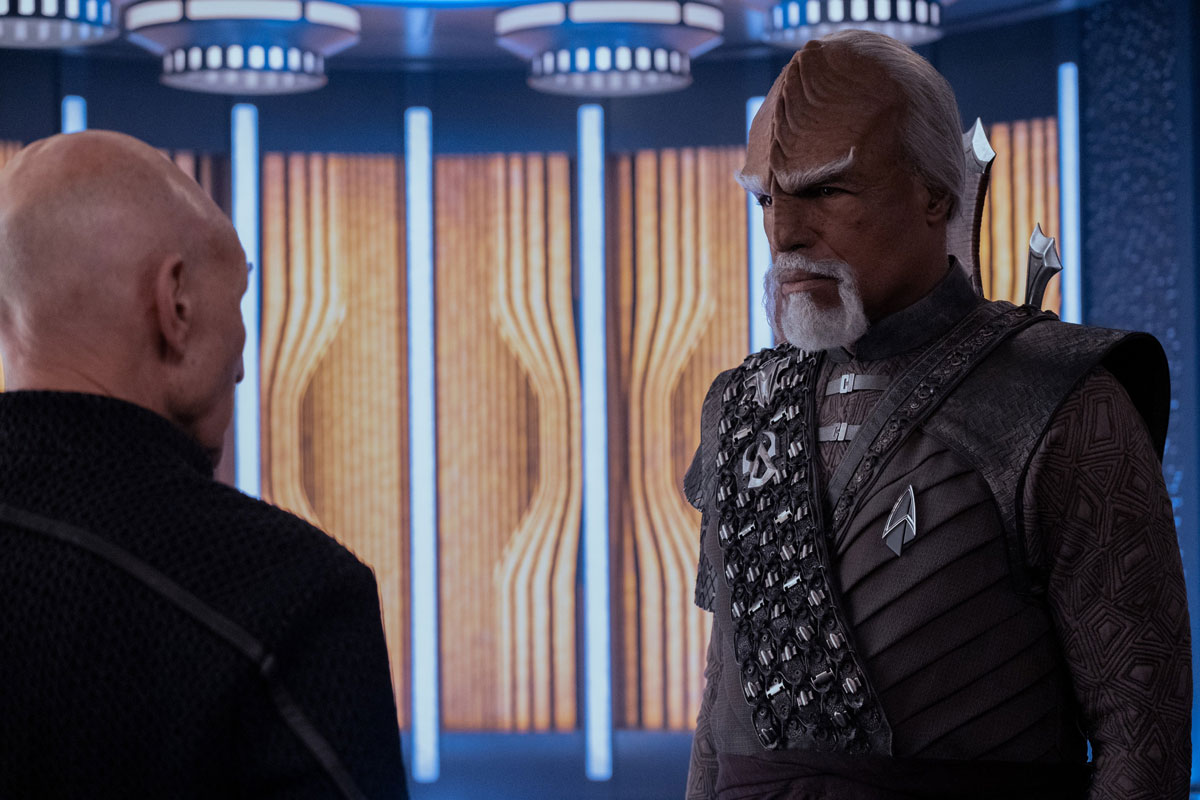
As in Ghostbusters: Afterlife, these younger characters exist largely as a means of validating the importance of their parents. Early on in the season, Jack Crusher is a wanted man. However, it’s quickly made clear that it’s not for anything that he has done. “Why do they want Jack?” Picard asks Beverly. “I don’t think it has anything to do with him,” she replies. “I think it somehow has something to do with you.” She presses, “That’s a war ship, with Jean-Luc Picard-sized enemies behind it.”
There are small moments of charm. Jonathan Frakes and Michael Dorn are charismatic performers, and while the show doesn’t necessarily capture the best of Riker and Worf, it is fun to see the two actors slipping so comfortably into their old roles. However, the show’s most interesting character is Liam Shaw, the Captain of Riker’s old ship, the Titan, played by Todd Stashwick. Freed of the weight of fan service, Shaw can be an actual character who develops in fascinating ways.
Still, the end result is just exhausting, particularly given that Andor just demonstrated what could be done with a franchise streaming show willing to look beyond easy fan service. Star Trek: Picard season 3 is a show that has truly lost all ambition for worldly acclaim and just wants to be the one that fans love. That sort of desperation is never endearing.

